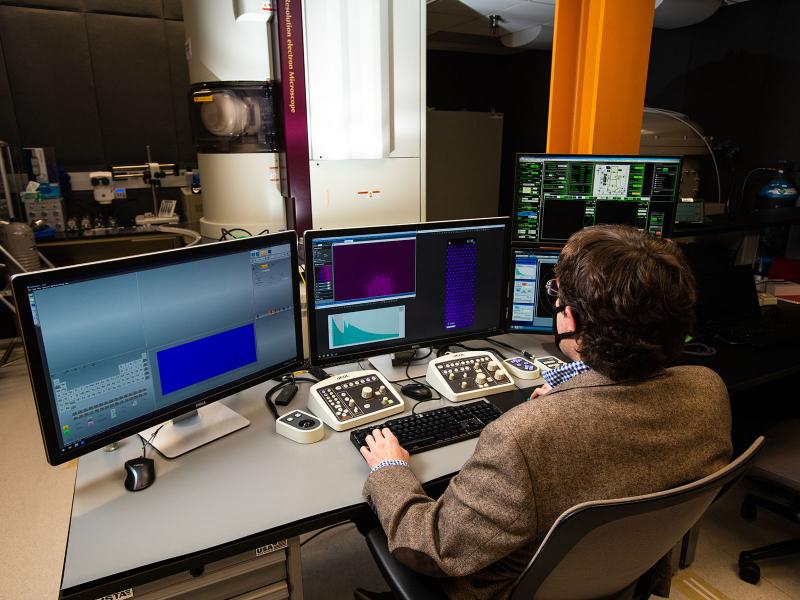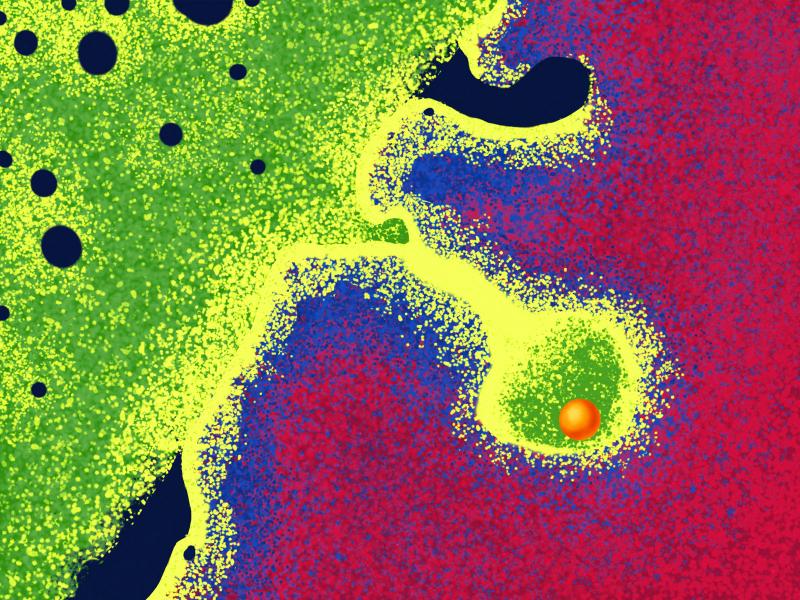
Electron Microscopy
PNNL is a leader in the integration of aberration-corrected electron microscopy, in-situ techniques, and atom probe tomography to address national challenges in nuclear materials, environmental remediation, energy storage, and national security.

This colorized atomic-scale electron microscope image shows how different materials can be combined for advanced computing technologies.

